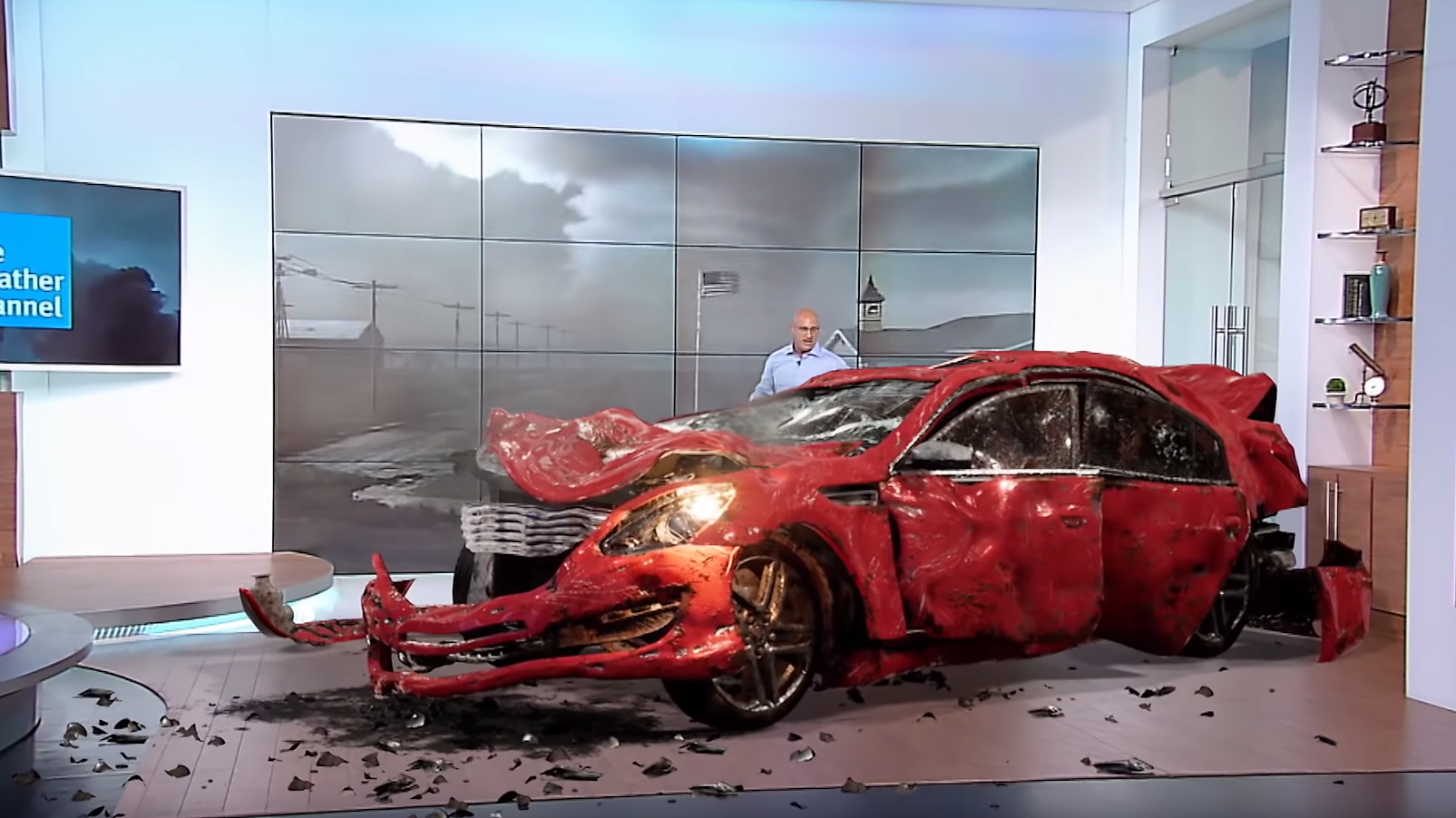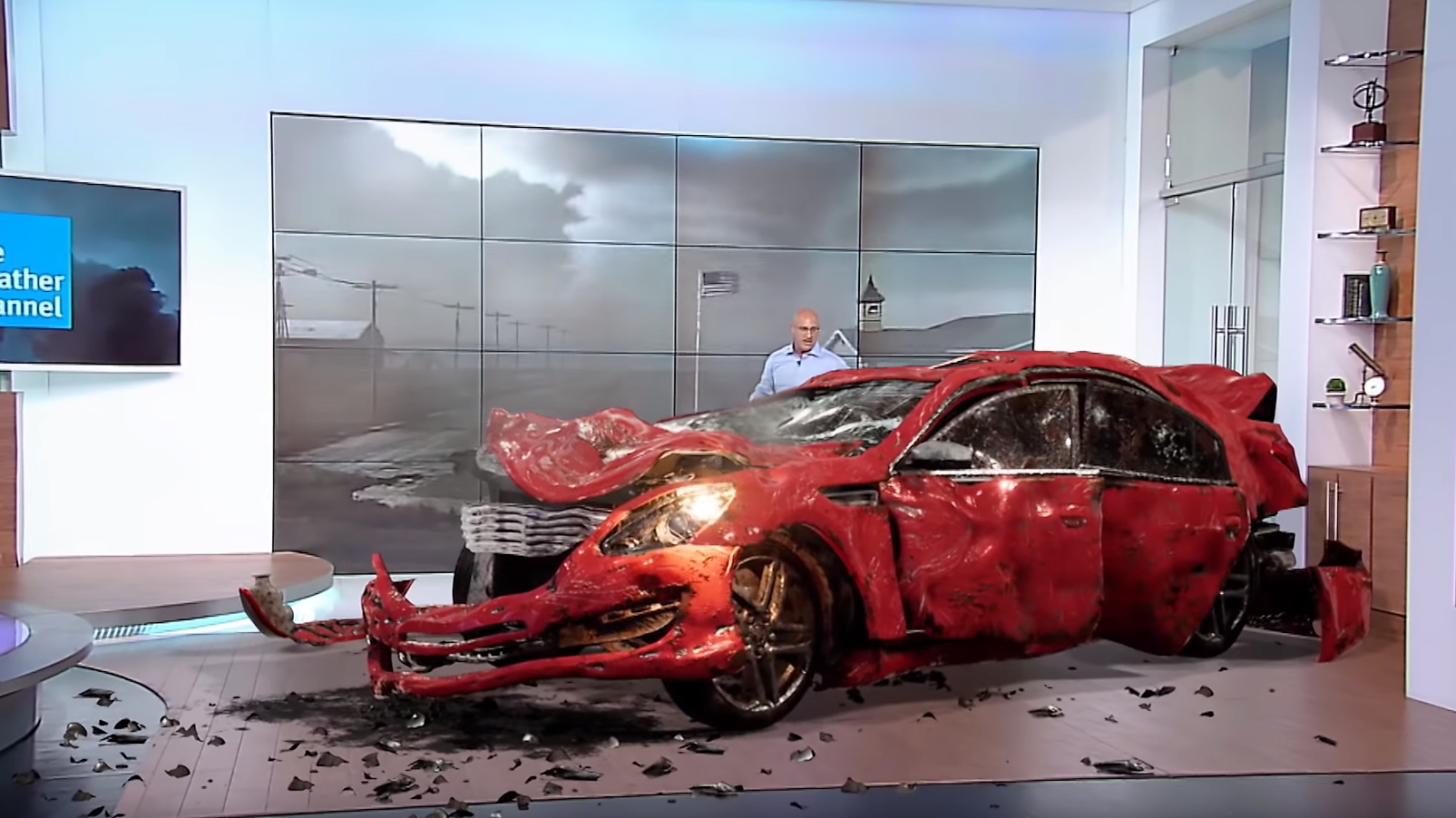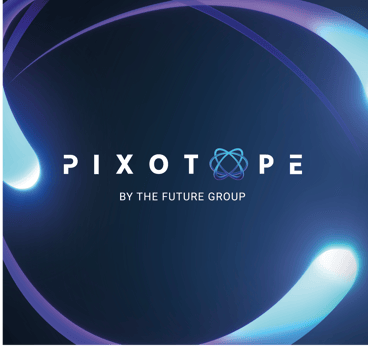
 The Weather Channel
The Weather Channel
Who'd have thought you could stage a live virtual studio using only a PC and a GPU? The Future Group's Pixotope is a staggering illustration of commodity computer power - and of course, some very clever software.
It’s very easy to claim that this or that new product is a paradigm shift. It sounds dramatic, and - actually, it does have to be, to quality for a genuine leap forward in the way we do things. The kind of change that makes us wonder how we managed without it.
So I’m offering this - The Future Group’s new product, Pixotope, as a candidate. See what you think.
TV production has seen changes, of course, over the last 50 years. There’s colour TV. Lighting has improved. There are robotic cameras in newsrooms. Cameras are no longer the size of refrigerators.
In the control gallery, switchers are smarter, more flexible and immensely more powerful. Instead of dozens of individual screens, we now have multi-viewers.
Graphics have improved. You no longer “roll VT”. Instead you play back a file. Definition is now higher. Newsroom systems and teleprompters have transformed the working lives - and on air abilities - of presenters.
That’s a lot of stuff that’s changed, and the results are remarkable. Look at a modern HD TV show from, say, CNN, compare it with a studio TV show from 50 years ago and it’s like comparing Star Trek’s Enterprise with a shopping trolly.
But the basic format has stayed the same: a space containing some presenters, some lights, some cameras, a control room and - that’s it.
Virtual studios are remarkably effective
Virtual studio sets have been around a long time now, and they’re remarkably effective. But until now, they’ve relied entirely on expensive proprietary hardware to work. According to The Future Group, this is all about to change. The problem with proprietary hardware is that, typically, it’s expensive and, despite all the money that you spend on it, it’s inflexible.
The Future Group’s Pixotope is a virtual studio package based that runs on commodity hardware. All it needs are (powerful!) workstations or servers from the likes of HP and Dell and a good GPU.
With this stuff, it’s easier to show than explain. So have a look a these two clips. They’re both from the Weather Channel, and both use the previous generation of The Future Group’s products, and it’s the functional essence of these hardware setups that have been captured and embodied in Pixotope. (Note that it’s worth watching these clips - especially the second (Tornado) one. Things happen that will take you buy surprise.
The Weather Channel's explanation of a storm surge, staged using The Future Group's technology
The Weather Channel's illustration of the dangers of a tornado strike, staged using The Future Group's technology
The first clip is the Weather channel’s dramatic explanation of the effects of a surge storm. It’s hard to think of a better way to demonstrate this, with the presenter on a podium, as a virtual - and somewhat terrifying - wall of angry water builds up around her. You’re left in no doubt about the effects of six feet of floodwater: it’s enough to float a car down the street. The Tornado demo is even more dramatic, as debris as large as tree trunks gets thrown around in the air as if it were tissue paper.
Behind all of this, and underpinning the real time performance of Pixotope, is the Unreal graphics engine. It will be familiar to gamers because it’s the bedrock of some of the most graphically stunning games. In recent times, the film and TV production industry have been looking at games engines to help with cinema productions and TV shows. The advantage of using a games engine is that it works in real time. (You don’t find participants in First Person Shooters taking a break for tea and biscuits while they wait for their latest daring move to be rendered).
Leap in graphics
It’s hard to express what a massive leap of graphics potential this is. Absolutely the only reason that we’ve had cinema quality animations in films for so long is that - in a sense - it doesn’t matter how long it takes them to render. (Of course it does matter, but everyone accepts that to get cinema quality, it’s not going to happen in real time).
And this creates all sorts of issues, especially when there is live action in amongst the animations - and even more so when we’re talking about live TV. The whole essence of live TV is that everything happens in real time.
pixotope has several software components that work together to produce live, interactive TV environments. We’ll go through those in a minute, but first: interactive: Yes. That’s the beauty of a virtual TV set. Imagine a game show, where you want to viewers to take part as well as the on-screen contestants. It would even be a show where all the scenery is computer generated.

Pixotope (By The Future Group) Logo
And because it’s all done by computer, just about everything can be driven by data, in real-time. This makes it the most interactive TV environment ever.
Using the version of their technology that came before Pixotope, The Future Group worked with FremantleMedia to create Lost In Time: a successful show where a third of viewers engaged with it interactively. Advertisers loved it because of the new inventory and the ability to deep-link their messaging within the show’s elements.
The business
That, ultimately, is the point about this technology: it makes business sense. Indeed it can form the basis of completely new business models, which are all the more attractive because of increased viewer engagement.
And it says an awful lot about how far generic IT technology has come. Live TV is an incredibly unforgiving environment. And creating cinematic quality graphics in real time is obviously a huge challenge. So bringing the two of them together like this into a product that you can buy as a service (it’s a subscription-based product) does, I think qualify as a paradigm change.
There are a few things that have to be well sorted when you’re planning a live (or as live) production using software.
First, it has to be able to interface with the real world: cameras, camera tracking systems, the control room, etc. Pixotope was designed with this scenario in mind, so it is able to integrate with tracking systems. It’s also straightforward to add new ones. Its distributed GUI is linked in real time to every element of the system via a real-time messaging server.
It goes without saying that chroma keying is a vital part of the process, and Pixotope has keying technology build in, with new, cutting-edge techniques in the pipeline.
We like this because it breaks so much new ground, leaving behind the need for proprietary hardware. And the future of TV productions is data driven. It opens up new business models and increases viewer engagement. With so much competition for eyeballs (and viewer responses) this has to be the way forward.
Tags: VR & AR


Comments